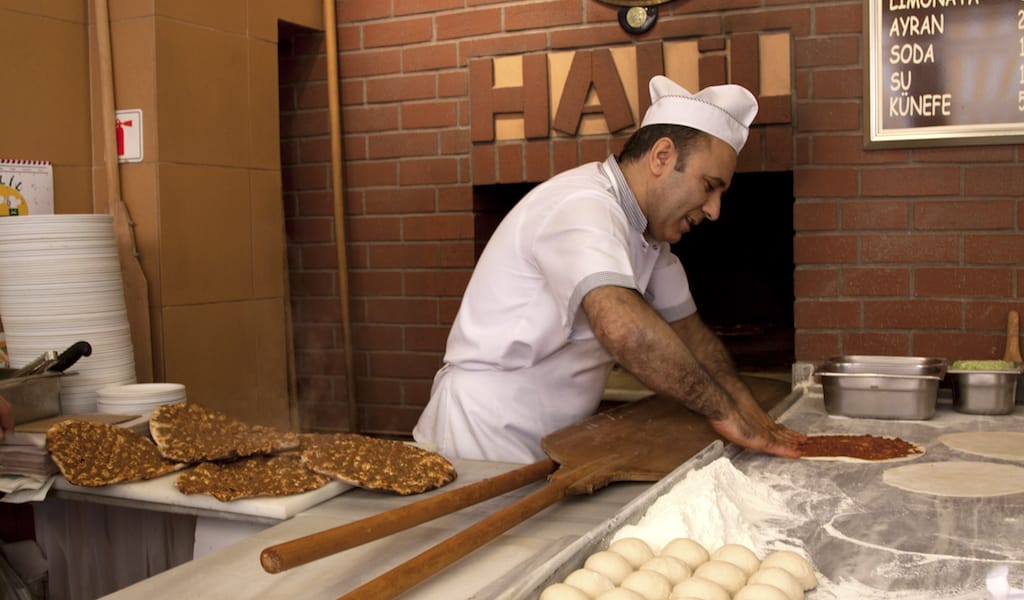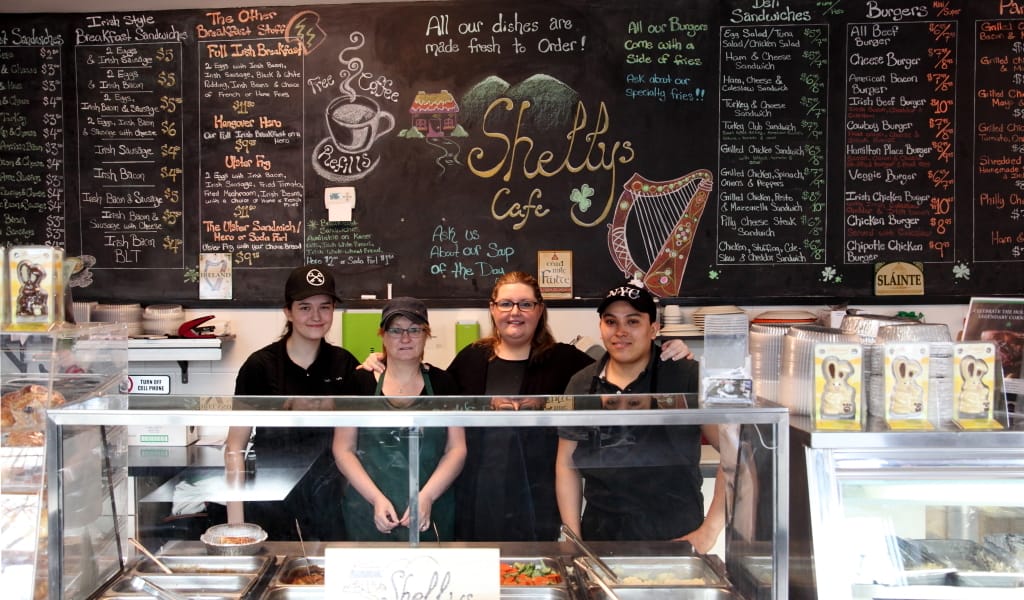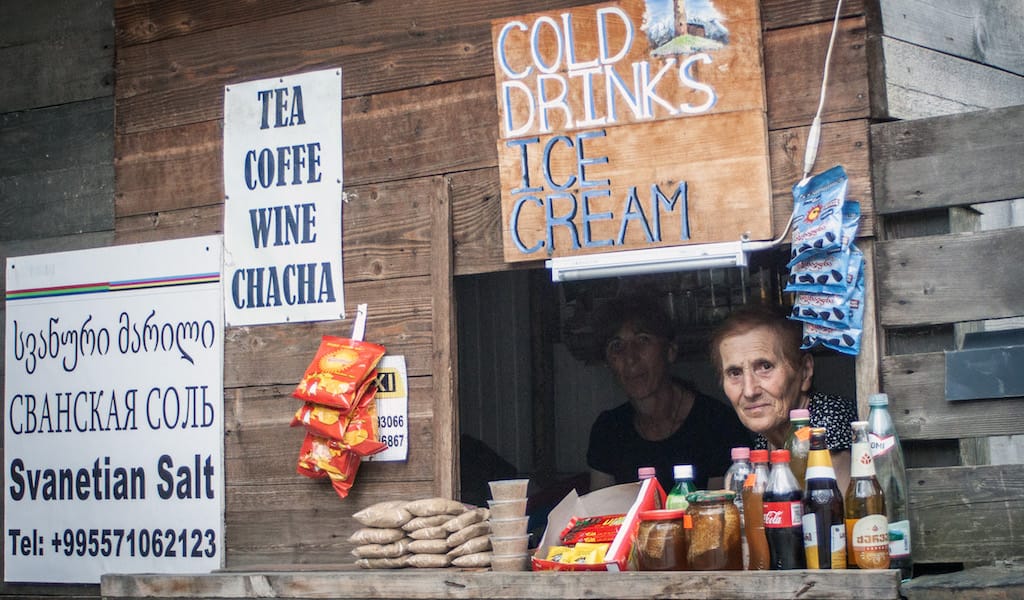As women in pink polo shirts conveyed steaming tureens, pungent earthenware crocks and freshly-baked sweet loaves, it was clear that the Azores’ celebration of the heavenly spirit had a strong component of earthy sustenance. We were at a função (function), a communal meal built around bread, wine and traditional meat dishes that forms a central part of the archipelago’s unique Holy Ghost festivities, which take place in villages around the islands over the 50 days after Easter.
“This is one of the island’s most deeply respected traditions and it’s taken very seriously,” explains José Álamo Meneses, mayor of Angra do Heroísmo, a jaw-droppingly beautiful UNESCO World Heritage city on the island of Terceira. “Only around 10 percent here go to mass regularly, but they fill the churches on the day of the Holy Spirit,” he adds, before joining 250 fellow citizens for lunch in a hall hung with patchwork blankets in the hillside neighborhood of Bicas de Cabo Verde.
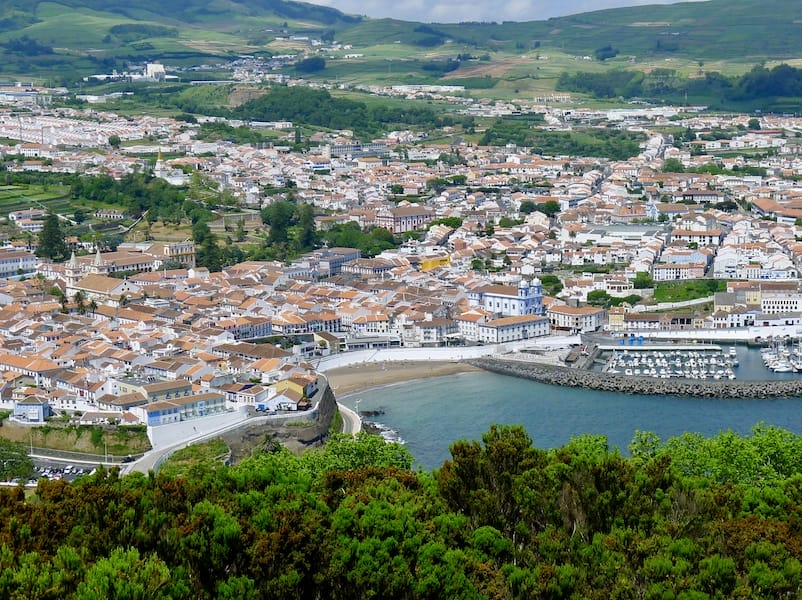
The Azores are the last stronghold of a Holy Spirit cult grounded in the teachings of a 12th-century Italian mystic, Gioacchino da Fiore. Da Fiore’s vision of an “empire of the Holy Spirit” where universal love reigns and Church hierarchies fall redundant was declared heretical by the Catholic mainstream. Among early Portuguese settlers in the remote Azores, however, the ideas took root and continue to thrive. “The church tried many times to suppress it, but people here resisted,” says Álamo Meneses.
Islanders recall how one disapproving bishop suffered repeated typographical “errors” in a local newspaper that dropped one letter from his name to turn it into an insult that roughly translates as “dickhead.” “You don’t mess with the Holy Spirit,” the mayor says.
“This is one of the island’s most deeply respected traditions and it’s taken very seriously.”
These days, the Church gets along with the brotherhoods. The local priest joined the feast here, supping on the first course of sopa do Espírito Santo: a rich beef broth flavored with garlic, cinnamon and mint; and thickened with buttered bread, potatoes and white cabbage. Placed strategically along long trellis tables were platters piled with hunks of boiled beef, slices of pork belly, liver, peppery linguiça sausage and slabs of jellified pig’s blood gleaming black like the volcanic rocks that ring the island.
Mixed among this meaty mess were carrots, yams, more potatoes and cabbage. This is cozido. With many regional variations, it’s Portugal’s national dish. On the neighboring island of São Miguel, they cook it by volcano, in pots lowered into thermal pits to bubble for hours. Ours was concocted in a makeshift kitchen on gas-fueled stoves by a trio of cooks who work Terceira’s função circuit. “We’ve been working since 3 a.m.,” smiled cook João Pereira. “And this one is easy, the other day we did one in Angra for 900 people.”
Nowhere takes the Holy Spirit cult as seriously as Terceira, an oval of green 4,110 kilometers due east from the Delaware coast. Every village and neighborhood has its own Brotherhood of the Divine Holy Spirit, 70 in total. Each has an império (empire), chapel-like local landmarks often with dazzling technicolor decorations. They are used to keep ornate silver crowns, scepters, embroidered red flags and other symbols of the cult. The brotherhoods (which, despite the name, include men and women) each year elect a symbolic “emperor” and a team of mordomos (stewards) to organize festivities and oversee charitable deeds – notably distribution of food in the form of bread, wine and beef. “We distributed 1,000 kilos of meat in the esmola [alms],” says Manuel Brum, president of the brotherhood’s assembly. “All year round, the people are working to put together funds for the celebrations.”
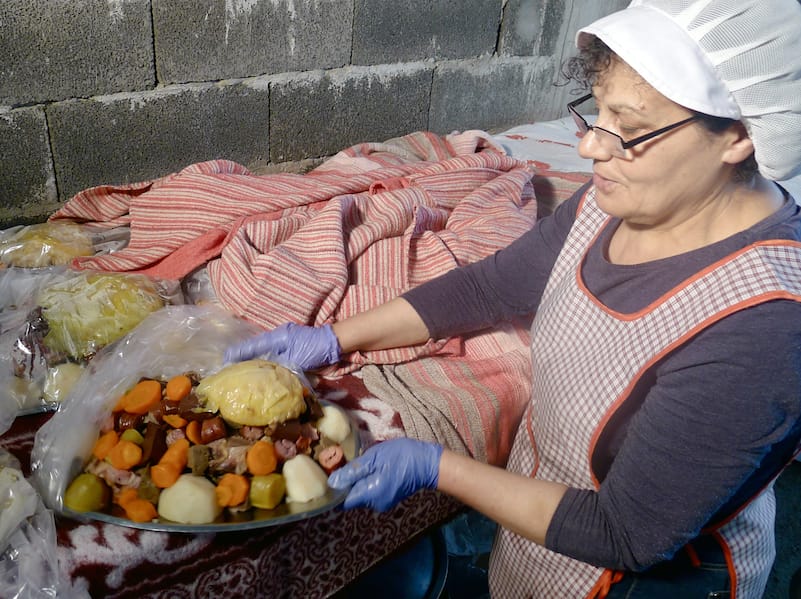
Terceira is a small island big on cattle. Dairy and beef herds graze year-round on its rich pastures and ranchers are among the biggest criadors (donors) to the brotherhoods. Hence, the beefy flavors on offer at celebratory lunches served by all the brotherhoods in the weeks after Easter. The second course is Terceira’s signature dish: alcatra – a pot roast of shank and sirloin slow-cooked with onion, cloves and wine until the meet is fork tender and powerfully aromatic. It’s believed to date back to the 15th century, when early settlers came from central Portugal, where a similar dish is made using goat or mutton.
Since Bicas’ imperio kitchens are under construction, the oven-cooked alcatras were trucked in by pickup and ferried to diners who scooped spoonfuls from traditional unglazed cooking pots to pour over slices of massa sovada, a wheat bread incorporating pureed sweat potato.
Traditionally, alcatra is cooked using white wine produced on the island’s rocky north coast or with vinho de cheiro, a sour, low-alcohol red made from grapes descended from wild New England strains.
The bovine contribution to Holy Spirit festivities takes another form a few days after the lunch through tourada à corda. Terceira’s unique form of bullfighting is another tradition dating back to the early days of settlement. Every village will hold at least one tourada between April and September. Bulls selected from herds roaming semi-wild in the high moorlands are released on main street, restrained (but not much) by a long rope held by men dressed in broadbrimmed black hats, white smocks and grey pants. This ton of angry livestock then proceeds to charge around the village aiming at daredevils waving capes, umbrellas or their bare hands. The trick is to get as close as possible without being gored, butted or trampled. They frequently fail, as shown by spectacular bull-hits-man videos that are bestsellers in Angra stores. The bulls are not harmed. Instead, the best return repeatedly to the fray, enjoying something like soccer-star status among aficionados.
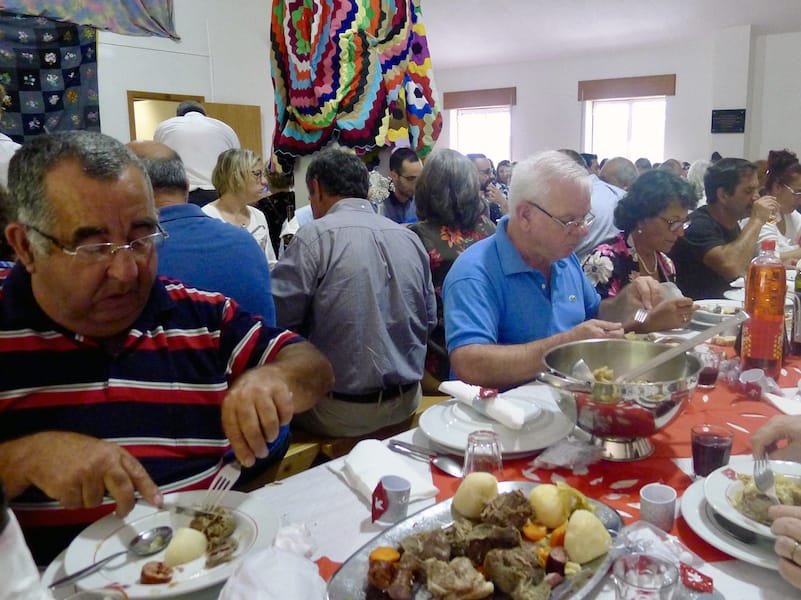
Back at lunch, another animal makes an appearance. After auctioning off handmade lacework and embroidery, the eight women and one man elected as this year’s mordomos opened bidding on a young goat led into the room amid cheering. The fortunate critter was snapped up by Brum, the fraternity president, as a pet for gleeful grandchildren, drawing some grumbles from neighbors bemoaning a good roast going to waste.
Then came dessert. Arroz doce, is a rice pudding that’s common around Portugal, but the Azores version is thick and creamy, yellow with yolks and flavored with lemon zest before it’s copiously sprinkled with cinnamon in designs of crowns and doves. With appetites sated and belts loosened a notch or two, diners began leaving, pausing to drop a voluntary contribution into one of the imperial crowns on display, or to kiss the dove-topped silver scepter before pressing it to their foreheads.
“We’re already raising money for next year,” say Brum. “We do our best with the little that we have.”
Paul AmesPaul Ames
Published on July 15, 2019
Related stories
March 7, 2018
Istanbul | By Culinary Backstreets
IstanbulLahmacun is the perfect savory snack: crispy, oven-fired crust, light and spicy meat spread, a fresh green garnish and a tangy spray from a lemon. We sample some of the best in the city on our Two Markets, Two Continents walk.
March 14, 2018
QueensTo her friends, Michelle Boyce, the owner of Shelly’s Café, is “Michelle.” That was the name called out by many customers, when arriving or departing, as we sat and talked in her sunny dining area on a recent afternoon. She is, to be sure, also “Shelly,” a diminutive bestowed on her by her mom in…
December 19, 2019
Tbilisi2019 was a good year for prying ourselves out of our Tbilisi comfort zone, filling the tank and getting out of town. For us it is a way to connect to the captivating earthy genuineness that prompted us to move here, but this year we wanted to meet some of the people who have become…














































